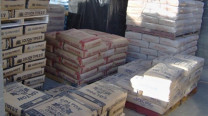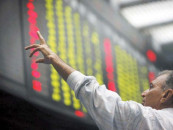Uninterested in interest rates? Think again!
So let’s try to cut through the clutter and figure out how changes in interest rates may impact the economy.

On October 9, The State Bank of Pakistan cut its benchmark interest rate from 13.5% to 12% — a move considered controversial by some economic analysts. There’s a high probability that many of us - discouraged by the burden of delving into economic jargon, oblique causal relationships and knotty figures - chose not to speculate about how this move would directly affect us. Yet interest rates influence the economy, and consequently our lives, in a profound way.
Exactly how interest rates relate to the functioning of the economy is often lost behind layers of mathematical formulae and intellectual musings. So let’s try to cut through the clutter and figure out how changes in interest rates may impact the economy and how that really trickles down to us.
The economy is like a machine – one which we don’t have a manual for. Policymakers tinker around with it, trying to make it function smoothly while trying to increase the living standard of the country. Interest rates – set by the central bank – represent one such knob that is available to fine-tune the economy.
According to conventional economic theory, interest rates have an inverse relationship with inflation. There are several caveats and addendums to that statement, but in general central banks follow that particular rule of thumb.
Interest is the price of money. If I have excess money, I can lend it to you for a certain price to compensate me for the probable decrease in the purchasing power of the money when you return it and my loss of liquidity during the time you have the money. All lending/borrowing transactions carry a rate of interest – explicit or otherwise – and consequently, there are a number of interest rates in the economy.
The benchmark interest rate, or the discount rate, is set by the central bank and is currently 12%. It is defined as the rate at which the central bank lends to other banks, but it serves primarily as a point of reference. All other interest rates in the economy are linked to this rate in theory and in practice to some degree. Changes in the discount rate and the resultant changes in other interest rates will then affect any borrower or lender in the economy.
If you have a bank account, you are an implicit lender. You may or may not earn interest on your account, but the money you deposit in a bank is then loaned out by the bank. You can also lend to the government by investing in the national savings scheme (NSS). An increase in discount rate is supposed to induce an increase in the deposit rate and the NSS rate and induce people to save a larger proportion of their income – at least on paper. As people consume less and save more, the demand for goods and services in the economy slows down and the growth in prices is supposed to slow down.
If you have a credit card, a mortgage, a house loan or a car loan, then you are a borrower. Most of the interest paid on these products is linked to the Karachi Interbank Offered Rate (Kibor) – the rate at which banks lend to each other – which is linked to the discount rate and carefully overseen by the central bank. Thus, an increase in the discount rate is will makes it more expensive to buy right now and pay for it later. And in the same way as described earlier, a fall in consumption is supposed to lead to a decline in inflation.
But does this mechanism work in Pakistan?
Unfortunately, in Pakistan, deposit rates are more or less invariant to small changes in the discount rate – particularly when the discount rate is increased. People also do not park their money in banks, whether to stay out of the tax net or to instead invest in other commonly perceived inflation hedges (e.g. gold and real estate). The possession of money is also required for black market transactions. Therefore, a certain proportion of transactions in the country are not routed through the banking sector. This constrains the discount rate as a means of controlling inflation since the policy is supposed to be transmitted through the banking sector.
It is unclear how responsive the demand for consumer financing (e.g. auto loans, home loans, etc) is to changes in the discount rate in Pakistan. Relatively low interest rates in the economy did correspond with and probably fueled the consumer-lending boom during 2002-2007, but it is unclear how much of the proceeding decline in consumer financing was caused by banks’ reluctance to lend and how much was a result of a slump in demand as people chose to opt out of buying on credit.
Increasing the discount rate is supposed to act as a deterrent to borrowers of all forms – including the government. Unfortunately, the government has little option but to borrow money if it can’t raise the required taxes and seems insensitive to the cost of borrowing.
Large businesses that draw loans suffer an increase in costs with increases in the discount rate. They could then choose to pass this on to consumers and contribute to higher inflation and in Pakistan’s case it is quite likely that this happens. Lowering the interest rate may entice them to invest in other projects that can increase the capacity of the economy, but the Pakistani industry has enough problems of idle capacity with the unending power and energy shortages.
And there lies the key to tackling inflation in Pakistan: resolving the structural issues in the country, and not simply tinkering with discount rates.
But then what does the discount rate do in Pakistan? Simply put, it sends a signal to the country about where the central bank thinks the economy is heading and what inflation is likely to be. That signal, in turn, determines the actual level of inflation, which then affects all and sundry by impacting purchasing power. It also probably has a connection with the price level in the country, but one that is incredibly complex and non-linear. Ultimately, policymakers should take a bite of humble pie and admit that they’re still trying to figure this relationship out.
Published in The Express Tribune, November 2nd, 2011.



















COMMENTS
Comments are moderated and generally will be posted if they are on-topic and not abusive.
For more information, please see our Comments FAQ